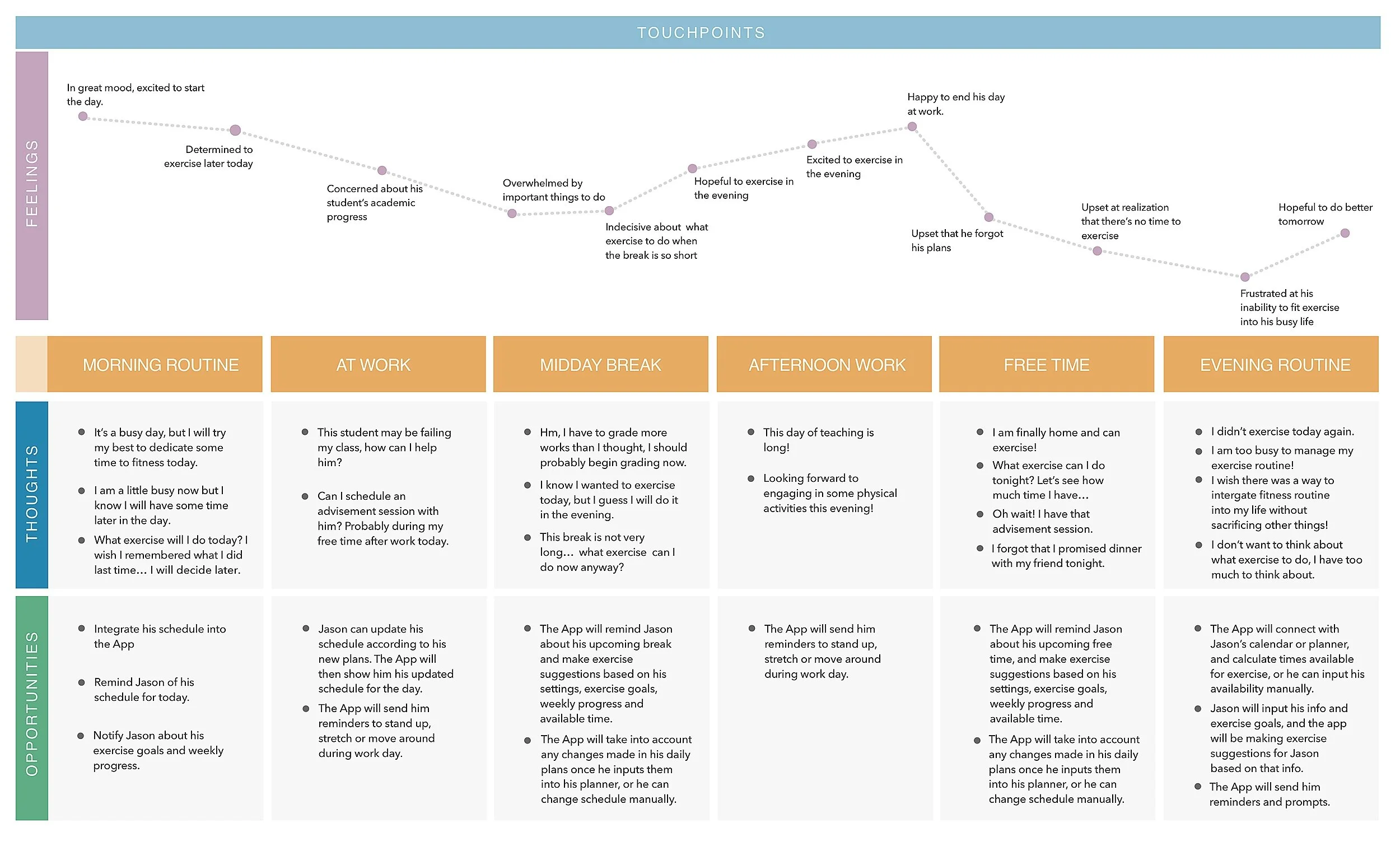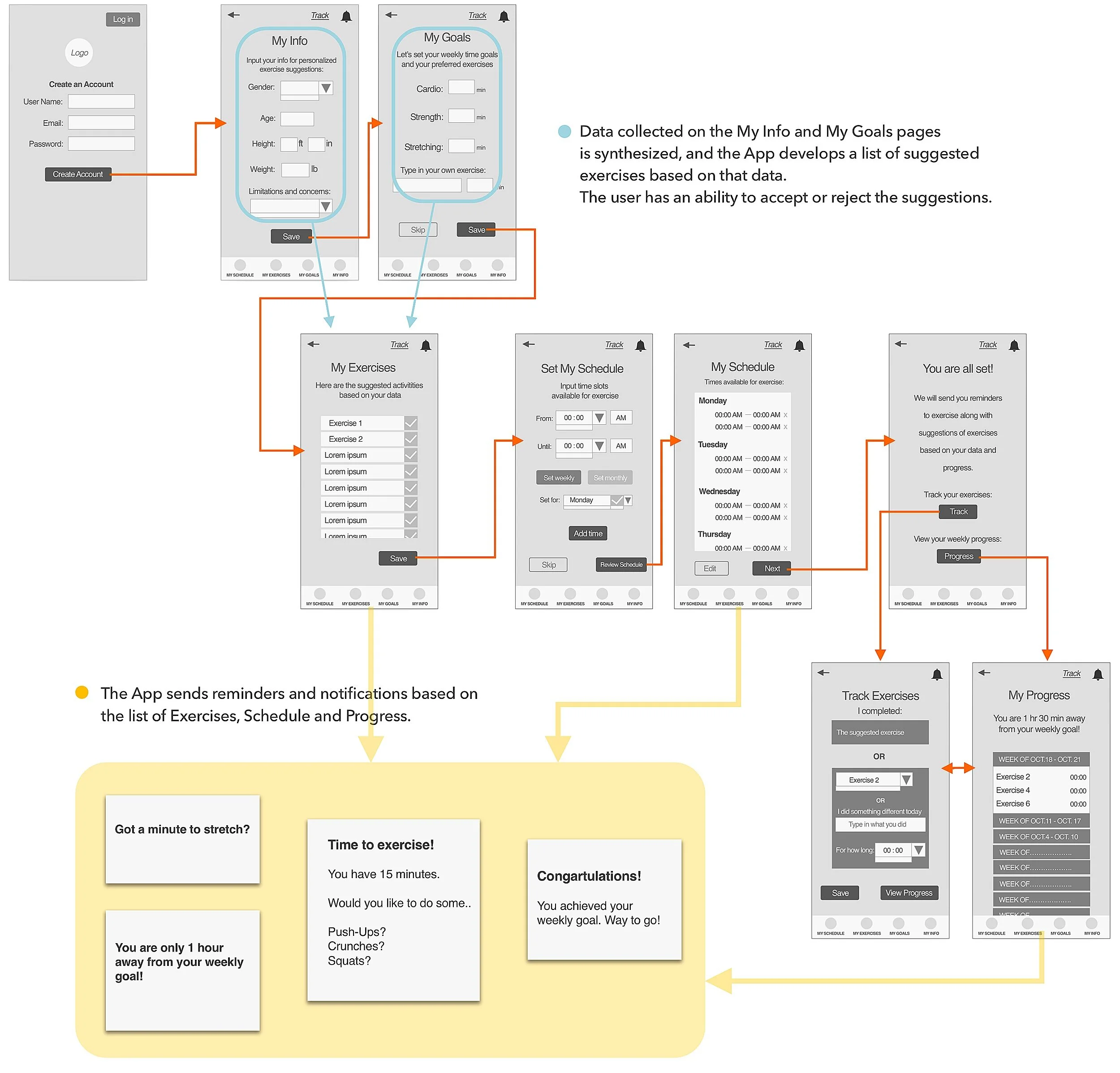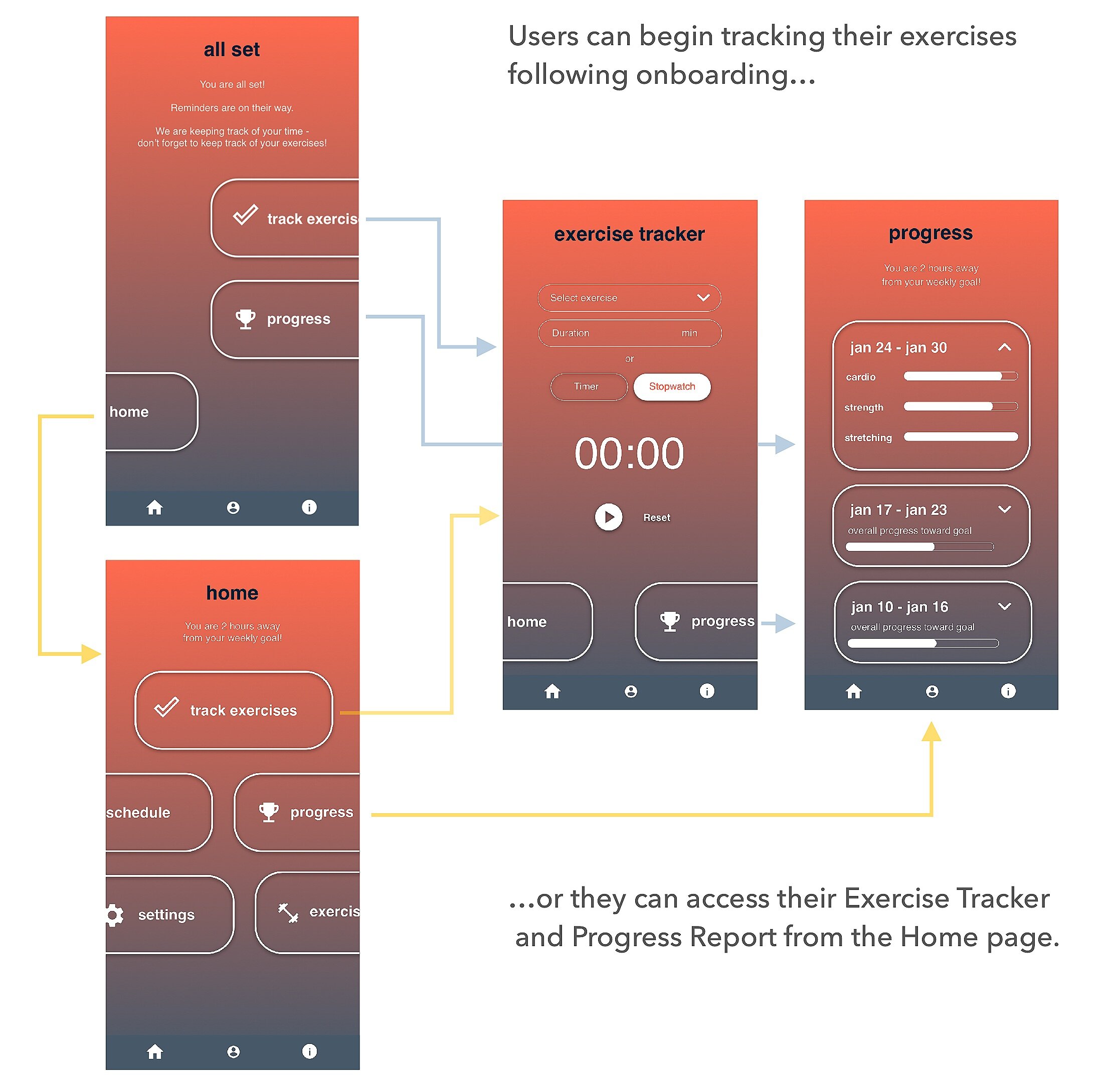hourglass
bring exercise into your busy life
2021
The Challenge
“Create an app for maintaining an exercise routine” - is a seemingly trivial, easy task. However, one glance at Google Play - and it becomes immediately clear that the market is already inundated with this type of apps, all kinds one could imagine, for any target audience among mobile device users. Yet we all know people who find it difficult to stay fit and exercise as much as they would like.
Where do their problems lie, and what can we bring to the table to help? User Research might help.
User Research
Competitive and Comparative Analysis
I started my research with conducting C+C analysis. I reviewed a number of apps for exercise routine maintenance, and other apps that may be related to health, planning daily activities and processing and synthesizing information collected from users as part of their functionality.
The latter used features some of which I considered potentially useful for an exercise maintenance app, such as:
Reminders - used by one of my personal favorites Drink Water reminder app; Cozi (an app for maintaining daily schedules);
A planner - Cozi;
The ability to input your parameters and have your plan customized for you - WW (former Weight Watchers).
Remarkably, I discovered that while fitness tracking apps offer exercise tracking, progress report and health parameter tracking, and the social features are quite popular, most of them are lacking a schedule or a planner, do not offer personalized approach to exercise routines and don’t use notifications.
Let’s look into the Feature Inventory below:
Despite lacking seemingly important features, these apps are highly rated by hundreds of users. Let’s dig deeper with help of User Interviews.
User Interviews
Screening for User Interviews: I sought out users who consistently make efforts to regularly exercise but are dissatisfied with their current routines, would like to do it more frequently or effectively than they do now. The group turned up consisting mainly of generally motivated individuals, between the ages of 26 and 46, actively building or on the peak of their careers.
During User Interviews I covered a wide range of questions to identify busy users’ habits, needs, wants and constraints, and came up with unexpected results. Users did not express many concerns regarding health parameters tracking, or social aspects of their fitness practices, as might be expected based on C+C analysis.
Instead, I identified the following pain points, presented in the chart below.
User Interviews Key Findings
User Persona
JASON
- 36 y.o. Community College Professor
Jason has a busy floating schedule with workload varying from day to day, and sometimes new tasks added on the go. He wants to be fit and needs to exercise regularly to stay healthy, but struggles to work out a fitness routine that would align with his schedule and suit his needs. He is not sure how to best choose and plan fitness activities, but hiring a personal trainer is too expensive for him. He tries to exercise on his own, but it happens very infrequently because of all these constrains. Jason sees no effects from his current efforts.
Behaviors:
Wants to exercise and attempts to when he can;
Adjusts his schedule often;
Tries to maintain work-life balance and cares about spending time with his friends.
Wants and Needs:
Wants to be fit, look good and feel energized;
Needs to exercise regularly in order to stay healthy.
Frustrations:
Struggles to keep up with his schedule and fit exercises into his daily life;
Has too much on his mind to plan his fitness activities and is not sure what exercises to do;
It’s hard for him to track his exercises and stay motivated.
Let’s look at how Jason’s day might look like, and his thoughts and feelings along his journey.
Jason’s Journey Map
Now that we understand our user better, we can redefine the Problem.
The Problem
Jason wants to regularly exercise in order to be fit and stay healthy, but struggles to find time for fitness activities in his busy schedule. In addition, he has difficulties deciding what exercises to do when opportunities arise - he thinks that perhaps it could be easier if he could better track his routine. And sometimes he simply lacks motivation to work out.
Jason firmly believes that he is just too busy to exercise.
How can we break Jason’s belief that he cannot find time to exercise, and help him stay on track of his fitness activities?
The Solution
...might be an app that…
Collects Jason’s data, such as his physical parameters, limitations and access to sports equipment;
Collects his availability information by proving an option to manually input his schedule of availability;
Allows Jason to determine his weekly goals for various types of exercises.
Uses an algorithm that creates a list of suggested exercises for him based on his data;
It thinks for Jason about what exercises to do and when, and sends him prompts and reminders in accordance with his schedule and weekly goals.
Allows Jason to track his exercises;
Provides and stores weekly Progress Reports;
Reflects Progress in its prompts and reminders;
Encourages and congratulates Jason on his achievements.
Building Blocks
Greyscale Prototype Usability Testing
The Objectives:
To find out if users understand the functions of the App;
To detect any pain points they may experience when navigating through the App;
To evaluate their interest in this App. Will they find it helpful? Are there features that can be added for improved experience, or, on the contrary, removed from the current prototype?
Tasks given to the users:
Find your way through the App and explore how it works;
Track your exercises and review your progress;
Provide feedback on the notifications feature.
Key Findings
100% of the users found that it was hard in the beginning to understand how the app works, and were confused by all the required steps. The app was lacking a clear starting point or a page where they could view, understand and access the features.
“The navigation is too linear!”
“The presentation of features could be better!”
50% of the users felt overwhelmed by the amount of information that the app required them to input manually.
“That’s annoying!”
50% of the users felt comfortable inputting all the required information and felt that it would help the App serve them better.
100% of the users thought that the app would be very helpful to them. They appreciated the personalized approach of its algorithm and timely reminders, prompt and suggestions. They liked the idea of not having to constantly keep track of their schedule and think themselves about what exercises to do. They expressed interest in downloading the app.
“This App might actually make a difference in my life!
Iterations
High Fidelity Prototype










